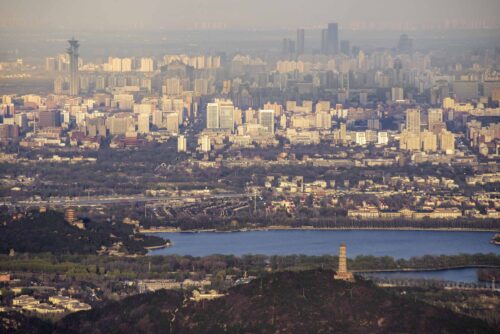High-speed train accident kills one, injures eight in Guizhou Province
A Guangzhou-bound train derailed after plowing into landslide debris, but China’s high-speed railway network has proven to be remarkably safe despite the country’s mountainous geography and climate extremes.

Two carriages from a passenger train derailed in the southwestern Guizhou Province on Saturday, killing the driver and injuring eight people, while the remaining 136 passengers have all been evacuated safely.
The Guangzhou-bound train hit debris from a landslide left on the tracks near Rongjiang County. An investigation is still underway, raising concerns about train safety amid forecasts of more torrential downpours and floods in southern and central China this season.
- China’s train safety record has improved remarkably since the last fatal incident shook public confidence in 2011, when 40 people were killed and nearly 200 others injured after a major train crash near Wenzhou, Zhejiang Province.
- Last summer, torrential rain killed over 300 people and trapped terrified residents in the subway system in Zhengzhou, a city of 10 million people in central China.
- A similar but non-fatal incident occurred in 2020, after a D-class train traveling between Guangzhou and Chongqing derailed due to heavy rains, the third accident in three months.
- Though the high-speed railway is more resilient than air travel against severe weather, it is prone to the whims of China’s vast and varying geography, with the southeast coastal region more exposed to rain, thunderstorms, and floods, whereas central-eastern China is more vulnerable to snowstorms.
The derailed D-class train is the second-fastest train type in China, part of the nation’s impressive rail network. China’s high-speed train system is one of the biggest infrastructure projects in history, and has become a point of national pride, offering cheap prices, breakneck speeds, and even driverless trains.
- China has the world’s most extensive high-speed rail network, and has built 25,000 kilometers (15,534 miles) of high-speed railway since 2008 — more than the rest of the world combined.
- The Beijing-Shanghai High-speed Railway, one of China’s busiest and fastest rail lines, carried 1.35 billion passengers during its first decade of operation as of June 2021.
- In the first four months of this year, China put 581 kilometers (361 miles) of new railway lines into service — with about two thirds functioning at high speed — and invested 157.46 billion yuan ($23.21 billion).
- The State Council released its Medium- and Long-Term Railway Plan in 2016, complemented by a series of Five-Year Plans, with the intent to boost connectivity all throughout China.
- Almost all high speed trains are owned and operated by state-owned China Railway Corporation under the brand China Railway High-speed (CRH), which accounts for about two-thirds of the world’s high-speed rail tracks in commercial service.
- The railway system will “confer a net benefit of $378 billion to the Chinese economy and has an annual ROI of 6.5%”, per estimates from the Paulson Institute.
Despite concerns over how resilient the infrastructure push will be in the face of climate change, China’s domestic railway engineers are making an active effort to take on the challenge in line with Beijing’s goals:
- The 1,776-kilometer (1,103-mile) high-speed railway that links Urumqi, the capital of the northwestern Xinjiang Uyghur Autonomous Region, with Lanzhou, the capital of Gansu Province, has put up concrete walls, overground tunnels, and even trees to shield the train from harsh winds of about 20 mph.
- A bullet train released last year that connects Beijing and northeastern destinations can operate under temperatures as low as -40°C (-40°F) with unique braking and electrical heating systems.






